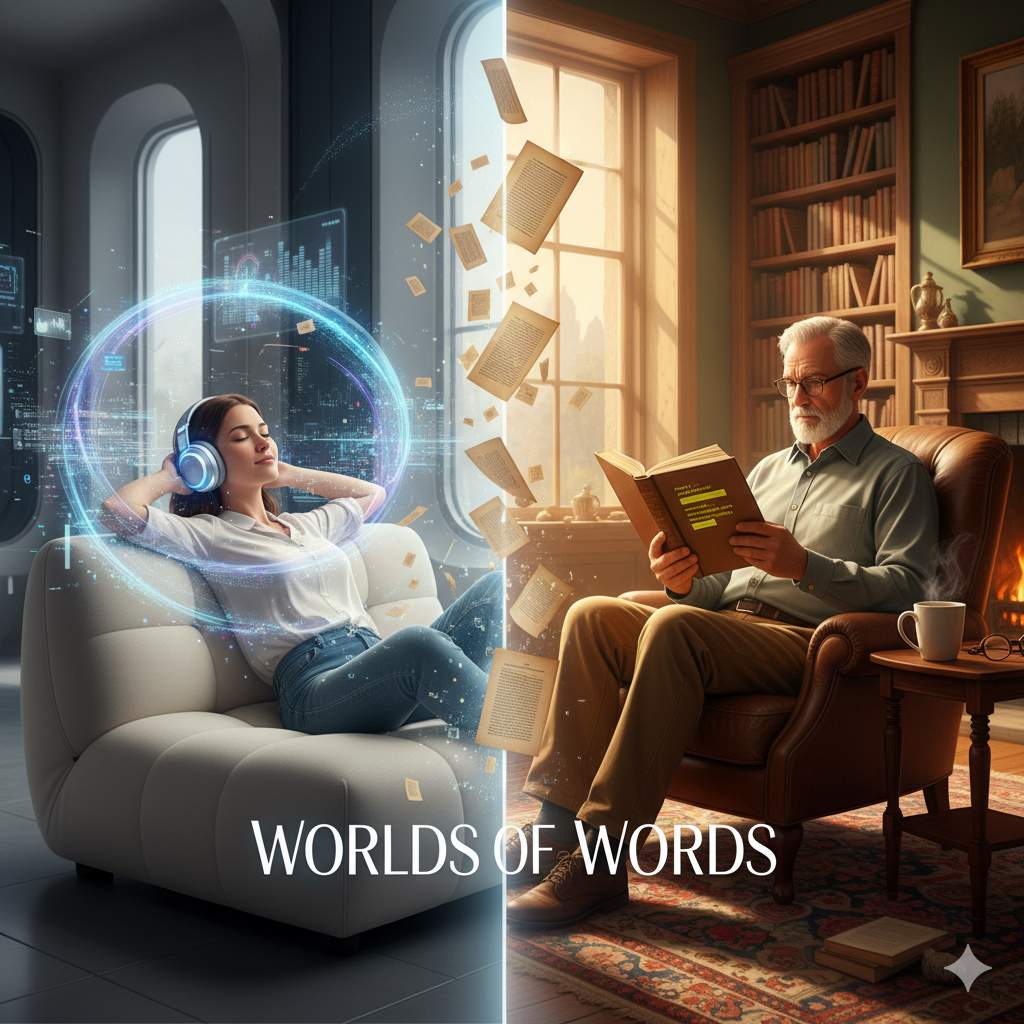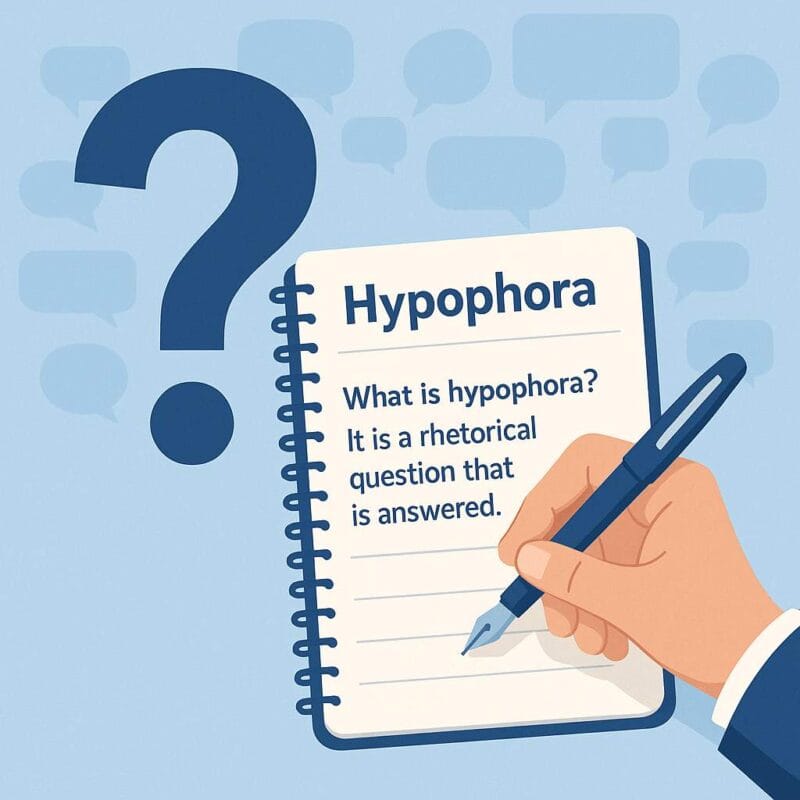The difference between listening to a book and reading it in print has sparked a debate that questions easy assumptions about how the mind engages with language. Listening to a story or essay is not the same sensory act as following lines of text with the eye, and the contrast raises a larger issue: does that distinction alter comprehension, memory, or intellectual involvement?
The question of whether listening to audiobooks is as good as reading is less about format preference than about cognitive effect. What follows is an examination of the evidence, the distinctive strengths and limitations of each mode of reading, and practical considerations for when listening, reading, or combining the two may serve us best.
The Evidence: Listening vs. Reading in Comprehension
A 2021 meta-analysis reviewed 46 empirical studies (total N ≈ 4,687) comparing listening and reading comprehension. It concluded there was no reliable overall advantage either way (effect size g = 0.07, p = .23). Yet moderating factors emerged: when reading was self-paced, it held a slight edge (g = 0.13), and in tests assessing inferential or general comprehension (rather than literal recall), reading showed stronger gains (g = 0.36 for inferential comprehension).
That result suggests the difference between listening to audiobooks and reading narrows or disappears under many circumstances, but subtle advantages may accrue to reading for deeper or more analytical work.
Controlled Experiments
Beth Rogowsky’s 2016 study assigned participants to three groups—reading, listening, or both—for passages from Unbroken (2010) by Laura Hillenbrand. Her team found no statistically significant differences in comprehension among the groups.
However, a 2010 experiment by David Daniel and Willliam Douglas Woody found listeners of podcast-like lessons scored ~28% lower on comprehension than readers of the same material in print. The discrepancy may depend on material complexity, modality pacing, and test design.
Overall, the balance of evidence leans toward rough parity for many narrative texts, with reading perhaps retaining an edge for denser or more inferential material.
Is it better to read or listen to a book?
When you read, your eye movements include frequent regressions (you unconsciously revisit parts of a sentence or paragraph)—that rechecking can support comprehension. Listening offers pause and rewind, but doing so interrupts flow and is less seamless (you must manually find the spot). Daniel (co-author of the earlier podcast study) argued that readers can more easily recover from lapses of attention, whereas listeners might miss content during “zoning out” and struggle to retrace their place.
Reading also lets you set your own pace: slow down, reread, skim, or skip flexibly. Audiobooks proceed linearly unless you intervene.
Material Complexity and Genre
Audiobooks tend to serve narrative works, memoirs, and fiction particularly well, where pacing, voice, and tone enhance immersion. For heavily technical, symbolic, or abstract writing, however, visuals (e.g., charts, footnotes, references) and re-examination favor reading the actual text more.
Some research suggests that reading is faster than listening on average. People commonly read around 250–300 words per minute, whereas comprehensible spoken speed hovers nearer 150–160 wpm. When speed and scanning matter (e.g., for research or skimming), reading may win.
Highlighting, Annotation, and Revision
With print or digital text, you can underline, annotate margins, highlight, and flip back. That tactile or visual re-engagement strengthens memory traces. In audio, you can’t mark emphasis or easily skip to “the important part” without context. Some listeners mitigate this by pairing listening with an ebook—but that changes the experience. Rogowsky’s experiment included a “dual modality” group, which scored similarly to reading alone.
Accessibility, Engagement & Motivation
Audiobooks expand access: they bypass visual impairment, dyslexia, or eye fatigue. They democratize literature for people who struggle with traditional reading. The ERIC report “Audiobooks and Literacy” argues that audiobooks can boost engagement in reluctant readers, especially boys, by leveraging comfortable audio devices and reducing barriers to entry. The National Literacy Trust in the UK similarly reports that audiobooks spark reading interest in children and widen access to stories.
Narration (tone, pacing, voice inflection) can heighten emotional engagement, especially in stories. Studies of prosody in audiobook narration show that narrators dramatize subtleties (pitch, volume, timing) to evoke meaning beyond text alone.
Are audiobooks as good as reading?
Overall, yes—audiobooks can approach the effectiveness of reading, particularly for narratives and less dense material. But they do not always replicate the distinct advantages that reading offers in terms of control, reprocessing, and annotation.
When we probe “better” in different dimensions:
- Retention and comprehension: largely comparable in many settings, with reading slightly advantaged when self-paced or inferential understanding is tested.
- Speed and skimming: reading tends to be faster and more flexible.
- Engagement and accessibility: audiobooks shine, especially for multitasking contexts or for those with barriers to reading.
- Analytical or technical texts: reading retains superiority when visuals, references, and complex structure matter.
Thus, the answer depends on what “better” means for your goals, time, and cognitive preferences.
Strategies for Hybrid Use: Listening and Reading in Tandem
- First listen, then read: Begin with an audiobook to absorb the narrative arc; follow with a reading pass for deeper insights. Some readers report this produces a synergy of clarity and nuance.
- Start with print, reinforce by listening: Read a difficult section first; then switch to audio for recapitulation or review.
- Chunk listening with active note-taking: Pause frequently to reflect, summarize aloud, or write bullet points to cement understanding.
- Use synchronized text + audio tools: Some platforms display text in sync with narration (karaoke-style). For struggling readers, integrating hand-guided highlights with read-aloud tech has raised comprehension by ~24% in trials with dyslexic students.
- Choose format by task: Use audiobooks for enjoyment, exposure, or contextual immersion (travel, chores). Reserve reading for research, analysis, or when detail matters.
Further Reading
Are Audiobooks As Good For You As Reading? Here’s What Experts Say by Markham Heid, Time Magazine
Is Listening to Audiobooks Really Reading? by Meghan O’Gieblyn, Wired
Is reading always better for your brain than listening to audiobooks? by Helen Thomson, New Scientist
What makes you decide to listen to an audiobook versus reading the book? on Reddit




